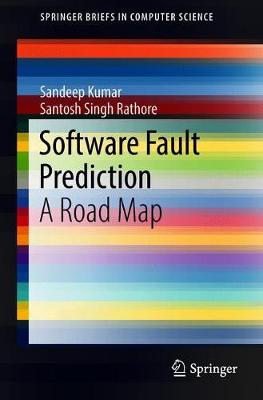SpringerBriefs in Computer Science
3 total works
Fault Prediction Modeling for the Prediction of Number of Software Faults
by Santosh Singh Rathore and Sandeep Kumar
A must-read for readers seeking a “one-stop” source of information on software fault prediction and recent research trends, the book will especially benefit those interested in pursuing research in this area. At the same time, it will provide experienced researchers with a valuable summary of the latest developments.
The book initially presents the basic concepts related to the Semantic Web, Semantic Web-based applications, Web applications, Ontology, and their qualitative aspects. It then presents the evaluation of the structural quality of modular ontologies and review on metrics for the evaluation of ontology behavior.
Further, the book discusses the qualitative evaluation of Semantic Web applications deployed on the Cloud, helping readers understand, maintain, integrate, and reuse these applications.
The book offers software engineers in general and ontology engineers in particular a single, valuable guide to help them find the best modularization on the basis of goodness of (re) use. It can also serve as an initial source of information for starting research in this domain.
This book focuses on exploring the use of software fault prediction in building reliable and robust software systems. It is divided into the following chapters: Chapter 1 presents an introduction to the study and also introduces basic concepts of software fault prediction. Chapter 2 explains the generalized architecture of the software fault prediction process and discusses its various components. In turn, Chapter 3 provides detailed information on types of fault prediction models and discusses the latest literature on each model. Chapter 4 describes the software fault datasets and diverse issues concerning fault datasets when building fault prediction models. Chapter 5 presents a study evaluating different techniques on the basis of their performance for software fault prediction. Chapter 6 presents another study evaluating techniques for predicting the number of faults in the software modules. In closing, Chapter 7 provides a summary of the topics discussed.
The book will beof immense benefit to all readers who are interested in starting research in this area. In addition, it offers experienced researchers a valuable overview of the latest work in this area.

